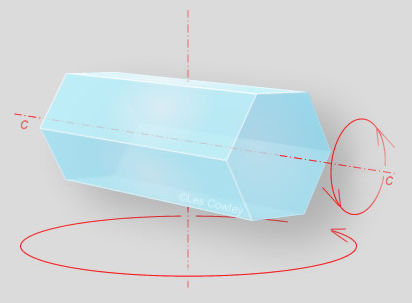Column Orientation and Column Arcs
Column Orientation and Column Arcs: Exploring the Phenomenon
Atmospheric optics is a fascinating field that delves into the study of light and its interaction with the Earth's atmosphere. One intriguing aspect of this discipline is the phenomenon of column orientation and the resulting column arcs or halos that can be observed in the sky. In this article, we will delve deeper into this topic, exploring the intricacies of column crystals and the various types of arcs they produce.
Column crystals are characterized by their elongated shape, with their long 'c' axis positioned horizontally. This orientation causes these crystals to drift in the atmosphere. The 'c' axis runs parallel to the edges of the prism faces and perpendicular to the end faces. These crystals possess two degrees of freedom, allowing them to assume rotational orientations around both the 'c' axis and a vertical axis perpendicular to it.
Within a large collection of column crystals, one can find specimens in various rotational positions. It is important to note that individual crystals do not spin on their own but contribute to the overall rotation of the collective. This rotation gives rise to a mesmerizing display of halos known as column arcs.
To observe visually pleasing and well-defined column arcs, it is crucial for the 'c' axis of the column crystals to be within a narrow range of less than 1° from horizontal. When rays of light pass through the prism side faces at an angle, they form tangent arcs. These tangent arcs are equivalent to sundogs when rays pass through plates. On the other hand, when rays pass between a side face and an end (basal) face, which has a wedge angle of 90°, they create supra- and infralateral arcs. These supra- and infralateral arcs are akin to circumzenithal and circumhorizon arcs observed with plates.
Interestingly, reflections off the side faces of column crystals result in the formation of sun pillars. These sun pillars, although surprising, add to the visual spectacle of atmospheric optics. Additionally, reflections from the vertical basal faces of column crystals contribute to the creation of the parhelic circle, further enhancing the complexity and beauty of the phenomenon.
While these are the more commonly observed arcs associated with column orientation, there are many other rare and intricate arc formations that can occur due to the complex paths of light rays interacting with column crystals. The interplay of light and crystal orientation gives rise to a plethora of unique atmospheric optical phenomena that continue to captivate researchers and enthusiasts alike.
In summary, column orientation and the resulting column arcs provide a captivating insight into the behavior of light in the Earth's atmosphere. By understanding the characteristics of column crystals and their rotational freedom, we can appreciate the diverse range of arcs that can be observed. From tangent arcs and supra- and infralateral arcs to sun pillars and the parhelic circle, each manifestation adds depth and intrigue to the study of atmospheric optics. As we continue to explore this field, we uncover new and rare arc formations, expanding our knowledge of the captivating world above us.

A high drag orientation for column crystals is with their long ‘c’ axis horizontal and so they drift. The c axis is parallel to the edges of the prism faces and perpendicular to the end faces.Column oriented crystals have two degrees of freedom. They can take all rotational orientations about the ‘c’ axis and also about a vertical axis perpendicular to the c axis. They do not individually spin but rather, in a large collection of them some will be found in all these rotational positions.The halos produced are called column arcs or halos.Good halos need the c axis to be within less than 1° of horizontal.Rays passing through prism side faces with a wedge angle form tangent arcs (the equivalent rays through plates give sundogs).Rays passing between a side face and end (basal) face, wedge angle 90°, form supra- and infralateral arcs (plates give circumzenithal and circumhorizon arcs).Reflections off side faces (surprisingly) form sun pillars. Reflections from the vertical basal faces contribute to the parhelic circle. More complicated ray paths give many rare arcs.
upper tangent arc lower tangent supralateral arc infralateral pillar
Images: upper tangent , Brian Hartmann lower tangent, Franck Schwittersupralateral, Jim Grossman infralateral, Alastair Adamscolumn pillar ,Erik Brenna Thumbnails lacking alarger version will be updated soon.
Note: this article has been automatically converted from the old site and may not appear as intended. You can find the original article here.
Reference Atmospheric Optics
If you use any of the definitions, information, or data presented on Atmospheric Optics, please copy the link or reference below to properly credit us as the reference source. Thank you!
-
<a href="https://atoptics.co.uk/blog/column-orientation-and-column-arcs/">Column Orientation and Column Arcs</a>
-
"Column Orientation and Column Arcs". Atmospheric Optics. Accessed on April 27, 2024. https://atoptics.co.uk/blog/column-orientation-and-column-arcs/.
-
"Column Orientation and Column Arcs". Atmospheric Optics, https://atoptics.co.uk/blog/column-orientation-and-column-arcs/. Accessed 27 April, 2024
-
Column Orientation and Column Arcs. Atmospheric Optics. Retrieved from https://atoptics.co.uk/blog/column-orientation-and-column-arcs/.